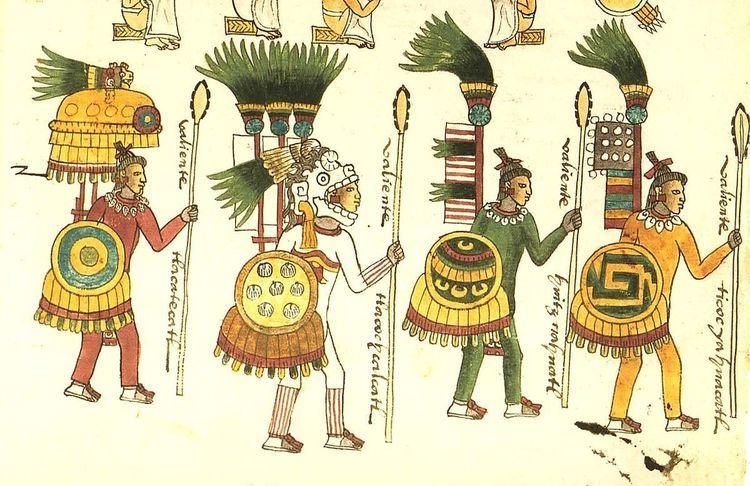 | ||
The Chimalli (from Nahuatl:Shield, pronunciation ) was the traditional defensive armament of the indigenous tribes of Mexico. These shields varied in design and purpose.
Contents
Typology
Otlachimalli consisted of maize cane with the individual strands double-twisted with interwoven cotton or maguey fibers. On the front ornaments were attached in the form of faces, legendary figures and other illustrations which were meant to convey heraldry and status of the user. These representations were worked with colorful feathers in the form of a mosaic. In addition, materials such as beaten copper and gold would be used for decoration. The Otlachimalli was used as a battle shield. The reverse was reinforced by horizontal and vertical wooden struts. A leather cover was used to protect the carrying arm. In some shields tortoise shell was used to manufacture decorations.
The Cuauhchimalli was made of wood and decorated in the same manner as the Otlachimalli. On the cuauhchimalli also mosaics from stone chips were sometimes applied. The reverse was equipped with two leather straps which were used for carrying the shield. In both types a leather pad was attached to the front as the basis for the ornaments, and they had a curtain of leather "straps" attached to the bottom portion of the shield which served as extra protection from arrows.
Variations
The size of the shields varied. Some had normal(circular design) dimensions, others covered the whole body. There are reports of versions that could be folded. There were also ceremonial shields called māhuizzoh chimalli.
